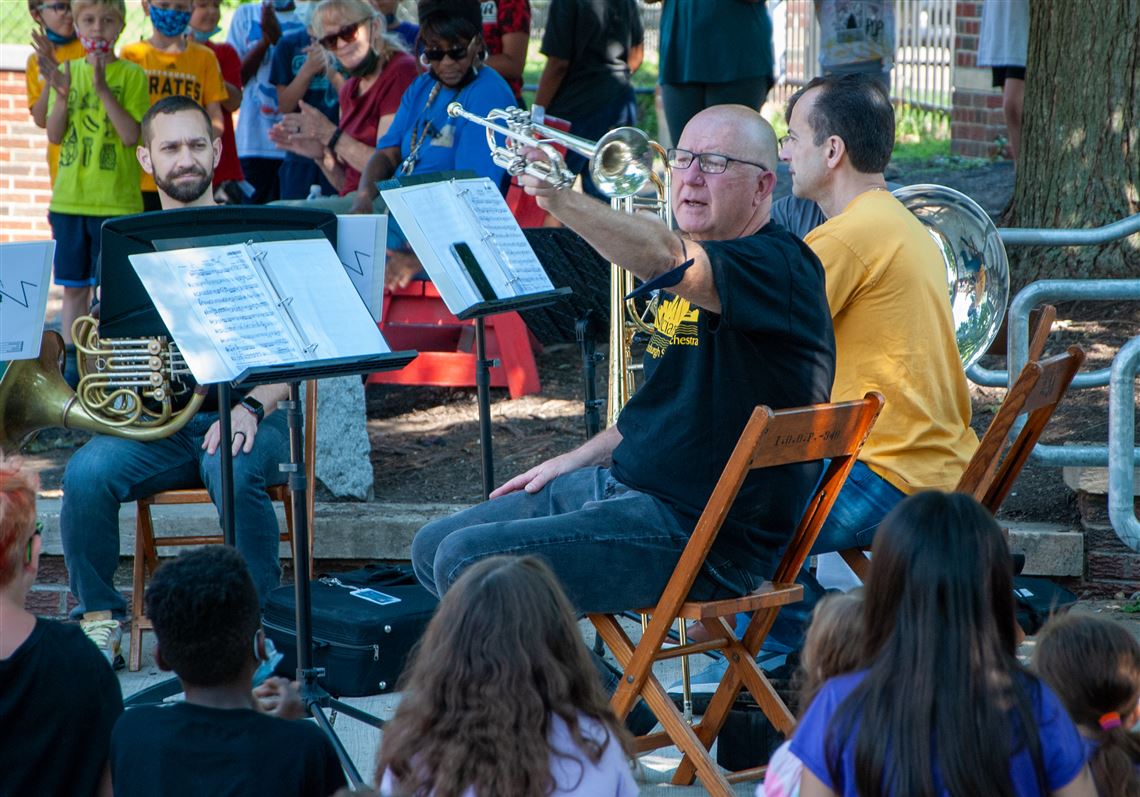This school music program helps students with the post-pandemic blues
In England, researchers are experimenting with surfing, gardening and dance classes to help combat the mental health fallout from COVID-19.
In the U.S., teachers are turning to music to aid students of various ages with increased levels of depression and behavioral issues.
Stacy Sims, a mind-body educator, founded Mindful Music Moments for schools in the Cincinnati area in 2016. Her idea was simple: have schools play calming music for a couple minutes a day to give kids and staff a chance to focus their minds.
What started as a partnership with the Cincinnati Symphony Orchestra has ballooned to partnerships with music organizations and hundreds of schools around the country, particularly during the pandemic.
The program now includes several dozen Western Pennsylvania schools. This is thanks to the efforts of some of the musicians of the Pittsburgh Symphony Orchestra, who held fundraisers to allow any local school to access the program free of charge for three years. More than 40 schools — 32 K-12 schools and 10 preschools — have signed up for the program this year already.
“Lots of the kids close their eyes and strike a meditative pose, and some of the teachers provide mood lighting,” said Shawn Van Mastrigt, a teacher at Turner Intermediate School in Wilkinsburg School District.
He explained that the students listen to 3 or 4 minutes of music each day for a week, and that the music ranges from classical to world music and from opera to film music.
“They seem to really appreciate this as a time to calm down and focus,” Mastrigt said.
Stress relief
The increased participation in Mindful Music Moments is part of a larger trend toward emphasizing mindfulness in education and mental health work, particularly important since in-person learning and development were disrupted for more than two years during the COVID-19 pandemic.
“The number one benefit is creating that students, teachers and administrators can take with them beyond this moment,” said Bryce Kessler, program manager for Mindful Music.
That ritual can be revisited throughout the day and week to help recenter the mind and process emotions.
The long-term impact the pandemic is having on kids is still being studied, but preliminary findings suggest broadly increased levels of depression had accelerated. According to the Centers for Disease Control and Prevention, the percentage of high school students who reported feelings of sadness or hopelessness jumped from 26% in 2009 to 37% in 2019, and then to 44% in 2021.
Schools are doing what they can to combat this trend, focusing additional resources on counseling and various kinds of “mindfulness” training, or taking time to notice how one is feeling and process those feelings.
Meditation can help with this, research indicates. And music is an effective meditation assist.
“Our mindfulness training is really a result of COVID,” said Michael Amick, principal of Bellevue Elementary in Northgate School District, a school of about 325.
He added that his school was using Mindful Music Moments as a part of the school’s overall strategy, which also offers a chill room and access to a behavior educator to help kids process their feelings.
“It’s hard to measure the impact and the benefit of mindful music out of context of everything else we’re doing,” Amick said.
“Last year we started with the ‘Superman’ theme from the movie. Kids really responded to that,” he said.
Fresh ears
Rhian Kenny is the piccolo player for the Pittsburgh Symphony. Last year, she started with a goal of interesting five Pittsburgh schools in a Mindful Music Moments pilot project, funded through the musicians’ own “Musician’s Care” fund for music education, which exists separately from the symphony.
The pilot jumped to 33 schools in a month. This year, the program has pushed past 40 schools and is continuing to grow. Thanks to a fundraiser, Western Pennsylvania schools can participate for free. Other schools are charged on a sliding scale, from $20 to about $1,000. Kenny noted that the program has quite a few home school families participating as well.
“My hope is that we get the kids when they’re little, and then at a certain point maybe they say ‘I want to play an instrument,’” Kenny said.
Mastrigt said there’s merit to that plan, as his school’s music program now has more students signed up for music than it has in a long time.
“The kids are really more buzzed about music — all kinds of music,” he said.
Each day, more than 135,000 children participate in Mindful Music thanks to partnerships with orchestras in San Francisco, Dallas, Cleveland and more.
To date, the Pittsburgh Symphony hasn’t formally partnered with Mindful Music. Kenny said she hopes that will change in future years, as the symphony could coordinate live performances by more musicians in schools to complement the program.
A symphony spokesperson said that education programs like Fiddlesticks, Schooltime and Side-by-side concerts are currently its priority, but that as more financial resources become available it will look for ways to expand its participation in school-based programs.
At the end of the previous school year, several PSO brass players headed to Bellevue to perform a final concert for the kids. The students were thrilled, said Amick, who added that he intends to continue the program in coming years.
“It’s a small way to expose kids to different cultures and forms of music and the value of taking time to listen and reflect,” he said.
